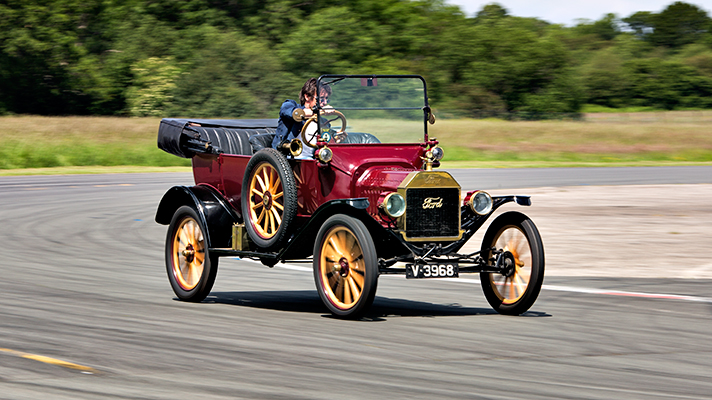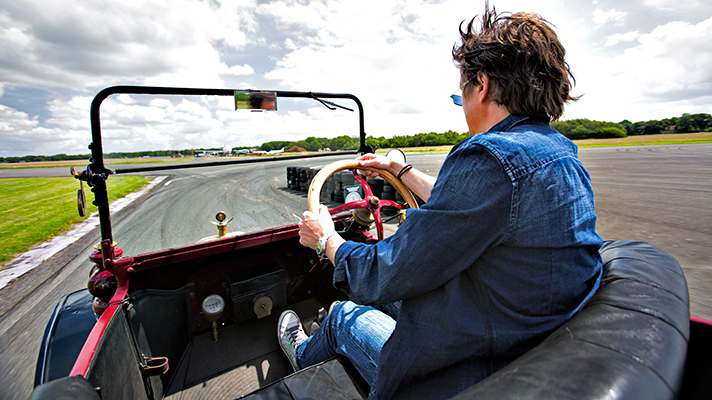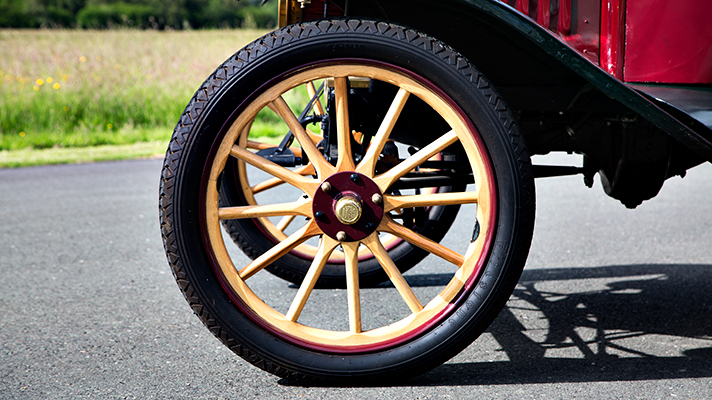
Hammond’s icons: Ford Model T
We all know it was a big-seller, the car that put the world on wheels and all that stuff, but it was, it really was.
In just 15 years, from 1908, Ford went from producing 10,000 cars a year to making two million per year, thanks largely to the Model T.
Fifteen million were made in the United States, and many, many more were made elsewhere - 300,000 in Manchester. They were cheap, they were simple, they were the butt of a million jokes, they had a crap nickname, "Tin Lizzie" and they were flat-out at 45mph. They were still produced right up to 1927, by which point they were already looking like a museum piece. But being plentiful, simple and cheap has in no way whatsoever detracted from their heart-melting charm.
It is a pure distillation of the essence of ‘car'. Looking at it, standing on the tarmac, brass headlamps seemingly blinking in the sunlight, it is clearly still revelling in the business of being a car, bubbling over with joy at the idea of being a machine that is somehow alive, ready to move you, your friends and family about as if by magic.
I go giddy even standing near these things. To climb into one is to step up into a film, a fantasy world, and there's a real sense lingering, even today, of the car's amazing new potential, the thrill of it all. And when this thing was new, it really was, as far as most people were concerned, "the car". By 1913, Ford was outproducing the rest of the world's carmakers put together, and this is what it was making.
Much has been made of how tricky a Model T is to drive: Jeremy and I made this point in our Perfect Road Trip DVD last year by parking one outside our hotel in Monte Carlo, secure in the knowledge that when we returned, it wouldn't have been moved on and parked elsewhere in favour of a more glamorous, expensive machine because the valet parkers simply couldn't get it started, let alone persuade the thing to move. And it's true: the controls are all different.
This is from the early days of cars, when it was still called motoring, when the traditions and rules of car design and ergonomics hadn't yet formed. And, as a result, the designers just had a stab at what they thought was the best set-up for operating a car.
The right pedal operates the brakes, the middle selects reverse, the left one can be depressed or lifted to switch between the two speeds and, on some models, the brake lever to the right also selects an overdrive. The accelerator is on the steering wheel and the horn doesn't even make it inside, being stuck on top of a lamp outside.
Yes, it's confusing at first - yes, there is a very large chance that a first drive of one will end up in a tree - but once you've got used to it, the whole thing works and soon becomes second nature. Until, of course, something goes wrong, at which point an instinctive driver's reaction will have you lifting off the brakes and engaging reverse with your braking foot whilst changing down to first with your clutch foot. Which probably won't solve the problem unless it's a very, very unusual and specific one.
But if a problem doesn't arrive, driving a Model T is as delicious and wonderful a thing as looking at one. The 2.9-litre side-valve engine putters and sputters like a cartoon, the transmission makes old movie whines and grindings, but it all works, really, really well. It had to.
Looking for more from the USA?
Top Gear
Newsletter
Thank you for subscribing to our newsletter. Look out for your regular round-up of news, reviews and offers in your inbox.
Get all the latest news, reviews and exclusives, direct to your inbox.
Driving was tough in 1908: as most of the roads were unpaved, it had to be an off-roader as well as a plaything, a sports car and a limo, and it could do all of these things with a confidence and assuredness that belies its fragile, spindly looks.
Moving off, I quickly get it up into the second of its two gears, and it drops into a gentle lope, low revs from the torquey engine punting it along towards its 45mph top speed. The brakes work, the suspension works, the seats are comfortable, the view over the bonnet is beguiling, and I grin until it hurts. I don't believe there is a happier, more alive little car to drive than one of these.
They're not expensive; there were millions of them, after all. They're simple to maintain, although there are stories of people leaving them unused and the car rewarding the owner's neglect by sticking its belts to its drive wheels and firing off through the door and possibly over the owner themselves at the first turn of the cranking handle.
I would love to have one, and I shall do so one day. If you like cars at all, I strongly advise you to seek out an opportunity to have a go. Take someone with you to photograph your grin at the moment you suss how to drive it. It'll be a peach.
Words: Richard Hammond
Specs: 2.9-litre 4cyl, RWD, 22bhp, 83lb ft, 20mpg, n/a g/km CO2, 0-45mph in many secs, 45mph top speed, 680kg, £11,250 approx
This article was originally published in the October 2014 issue of Top Gear magazine










